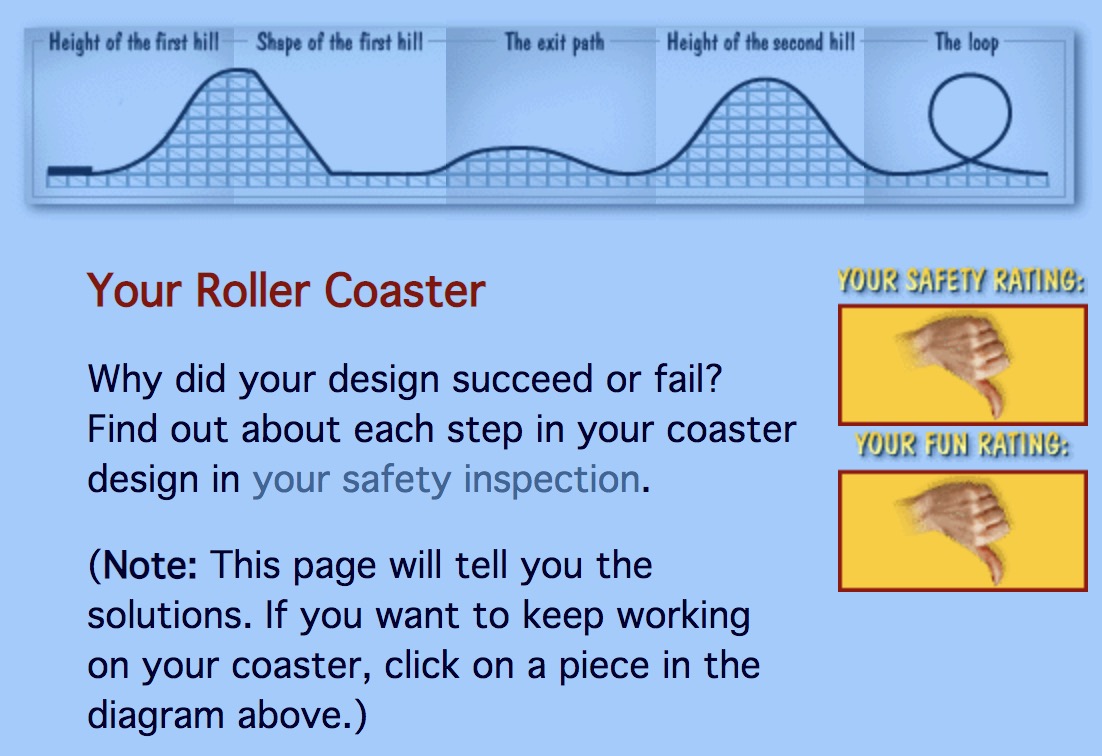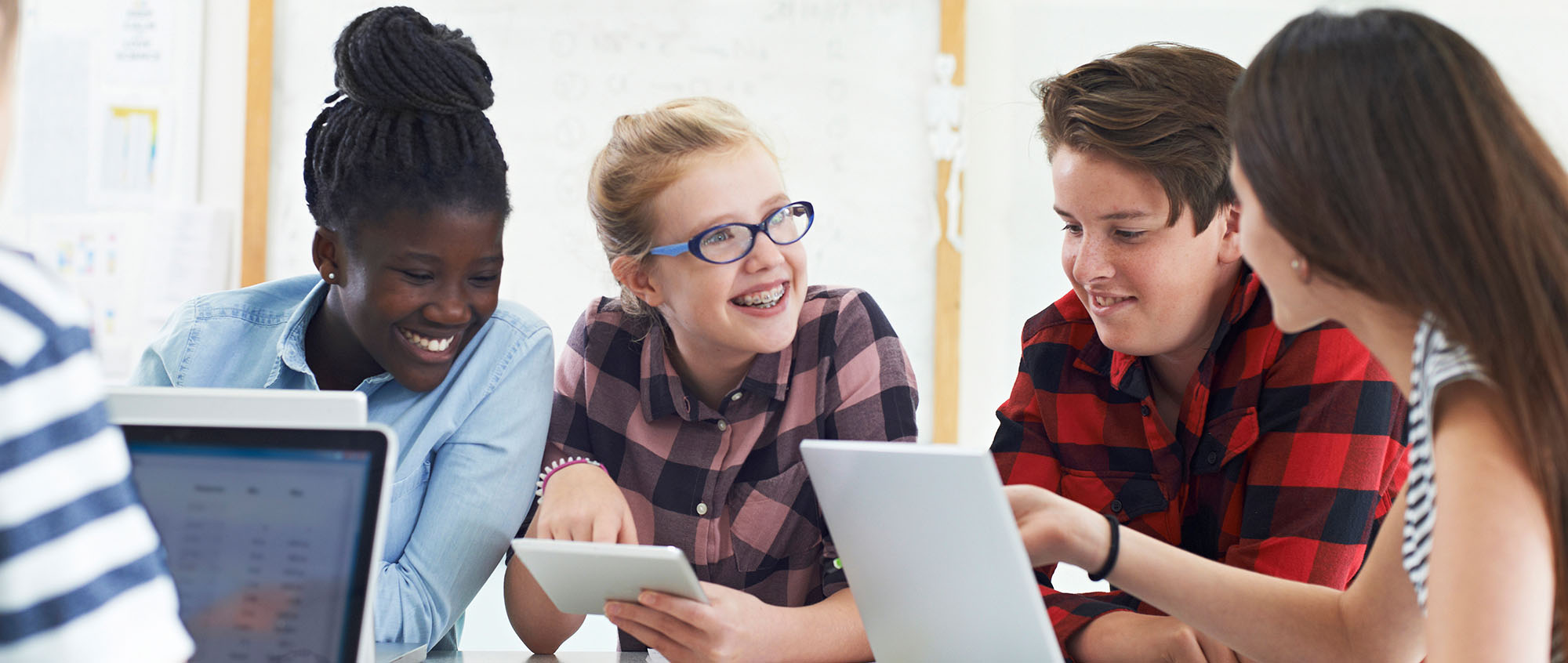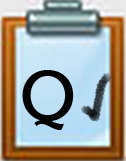Q4 STEAM: Roller Coaster Step 2
Imagine and Plan
A. Check with your teacher and/or design partners, and create a note-taking document to take notes on your design decisions. Discuss and decide:
- What note-taking application will you use? (Google docs, Word, Pages, a graphic organizer, or other?)
- Will one partner take the notes or each person take turns
- Will the note taking document be a shared document you can all edit?
B. Use this Design a Roller Coaster web site for this activity.
C. Select the height and shape of the first hill, an exit path, height of the second hill, and create a loop. Below is a screenshot of a design that received two thumbs down for safety and fun. Can you create a design that gets thumbs up?

D. Imagine: What are some of the key concepts based on your research about applying the physics of kinetic and potential energy to create a safe and fun roller coaster?
Answer the questions (to the right) in your note-taking document using the vocabulary terms (Potential and kinetic energy, energy loss, friction, mass, velocity, gravity):
IMAGINE AND PLAN (CONT.)
- Will you start your coaster with a low or higher hill? Explain why.

- What type of shape will be both safe and give the feeling of "weightlessness" for a thrilling experience (Smooth slope, angled slope or obtuse slope?

- When exiting the first hill what type of path will give the coaster maximum energy for the next hill?

- For the second hill, will there be enough energy to get to the top and over it? Will it create enough energy to do a loop?

- Will you have a loop, and if so what type will be safe?

Drawing: Have someone in your group draw what your coaster will look like using your choices of the five design options from above and indicate the height or length of each part.
You are now ready for the Step 3 to try out your design ideas.
Competencies & Standards
MITECS Michigan Integrated Technology Competencies for Students, and
3. Knowledge Constructor
c. Curate information from digital resources using a variety of tools and methods
4. Innovative Designer
a. Know and use a deliberate design process for generating ideas, testing theories, creating innovative artifacts or solving authentic problems
b. Select and use digital tools to plan and manage a design process that considers design constraints and calculated risks
c. Develop, test and refine prototypes as part of a cyclical design process
d. Exhibit a tolerance for ambiguity, perseverance and the capacity to work with open-ended problems
5. Computational Thinker
b. Collect data or identify relevant data sets
Websites and Documents
Websites
- Amusement Parks Physics
- ck-12 Physics Simulations
- Design a Roller Coaster
- Five-step Engineering Process
- How Roller Coasters Work
- How Stuff Works - Roller Coasters
Videos From Outside Sources
- Dad Builds Backyard Roller Coaster YouTube 11:30
- How Can a Roller Coaster go Upside Down without Falling? PBS Kids Video
- I Built a Huge Lego Roller Coaster Floor to Ceiling YouTube (10:53)
21t4s Videos
21t4s Documents & Quizzes




